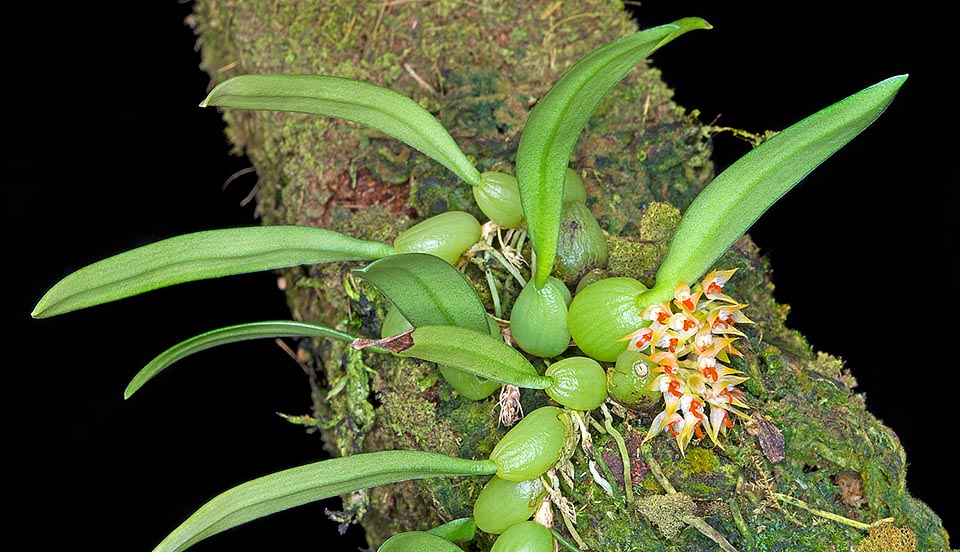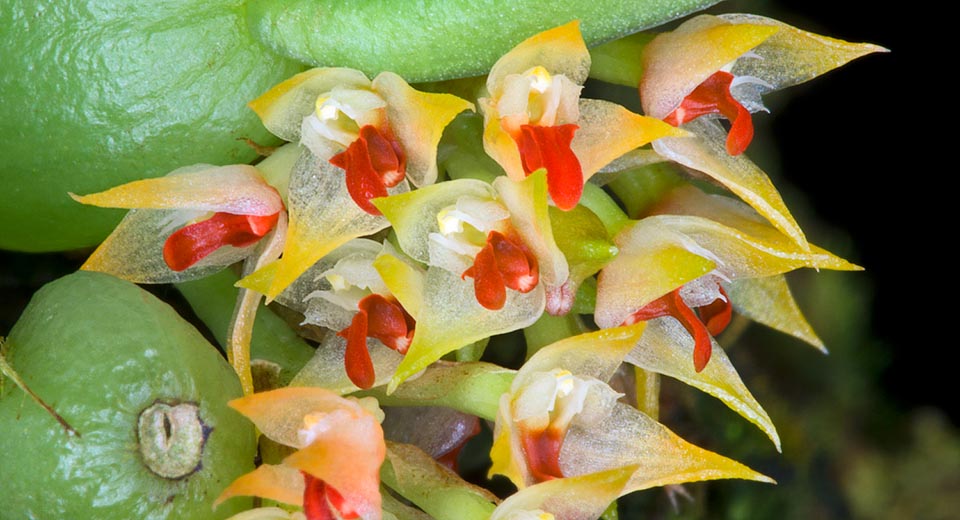Family : Orchidaceae

Text © Pietro Puccio

English translation by Mario Beltramini
The species is endemic to Taiwan where it grows on the trees of the humid forests between the 700 and 1500 m of altitude.
The name of the genus is the combination of the Greek sunstantives “βολβός” (bolbos) = bulb and “φύλλον” (phyllon) = leaf, with reference to the leaves that grow at the apex of the pseudobulbs; the name of the species is the combination of the Latin adjective “ruber, bra, brum” = red and of the substantive “labellum, i” = small lip, with obvious reference.
Common names: red lipped bulbophyllum (English); hong xin shi dou lan (Chinese).
The Bulbophyllum rubrolabellum T.P.Lin (1975) is an epiphytic species with creeping rhizome rooting at the nodes and close pseudobulbs, about 1 cm long and of 0,7 cm of diameter, of pale green colour, with at the apex one single oblong leaf with acute apex, 2,5-4 cm long and 0,8-1 cm broaf, of pale green colour, coriaceous.

Endemic to Taiwan and endangered in nature, the Bulbophyllum rubrolabellum is a miniature epiphytic orchid, rarely present in the collections © Giuseppe Mazza
Miniature orchid at risk of extinction in nature, rarely present in the collection of orchids passionates. On the base of the climate characteristics of the locations where it lives in nature the most suitable conditions of cultivation are those of an intermediate greenhouse for orchids, luminous and aerated, with lowest winter temperature values not under the 12 °C. The waterings must be frequent in summer, most spaced in winter, but without ever allowing the substratum to dry up completely, utilizing rain water, demineralized or by reverse osmosis.

The compact inflorescence has 5-10 tiny flowers of 0,6-0,8 cm of diameter with a bright red labellum that has given the name to the species © Giuseppe Mazza
The species is reported in the appendix II of the CITES (species whose trade is internationally ruled) and is present in the red list of the IUCN (International Union for Conservation of Nature) aming the species at very high risk of extinction in the next future (“Endangered”).
Synonyms: Bulbophyllum fenghuangshanianum S.S.Ying (1990); Bulbophyllum odoratissimum var. rubrolabellum (T.P.Lin) S.S.Ying (1990).
→ For general notions about ORCHIDACEAE please click here.
